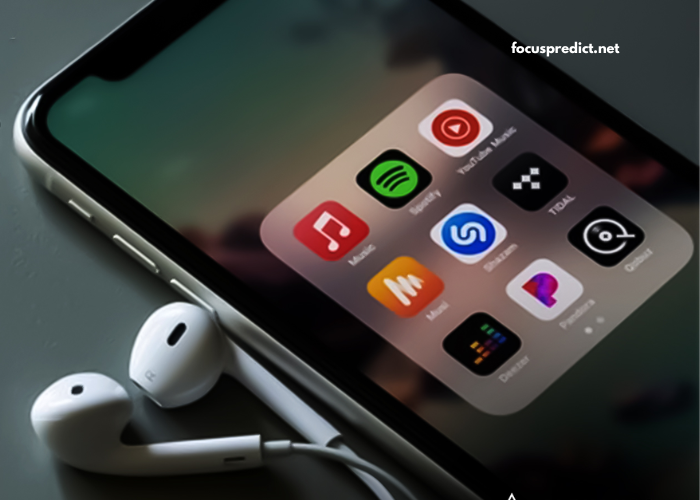The entertainment industry has undergone a monumental transformation in the past two decades. At the heart of this revolution is the rise of streaming services, which have fundamentally altered the way audiences consume content. Where once cable television and physical DVDs reigned supreme, now platforms like Netflix, Amazon Prime Video, Disney+, and Hulu dominate the landscape.
Streaming has transitioned the power of content delivery from network executives to consumers. With a few clicks or taps, viewers can access thousands of hours of content—anytime, anywhere, on any device.
On-Demand Culture Redefines Viewer Expectations
The streaming revolution has introduced an on-demand culture where viewers are no longer tied to specific time slots or programming schedules. This has created a seismic shift in expectations:
-
Instant gratification: People expect new content to be available instantly after its release.
-
Flexibility: Content can be paused, rewound, or watched again at will.
-
Binge-watching: Entire seasons of shows are now released at once, enabling viewers to consume content at their own pace.
This flexibility has enhanced user satisfaction and increased content engagement across demographics.
Democratization of Content Creation and Distribution
Breaking the Monopoly of Major Studios
Before the advent of streaming platforms, Hollywood studios and large TV networks had almost complete control over what content got produced and distributed. The streaming model disrupted this monopoly.
Now, independent creators, smaller production houses, and even international filmmakers have a platform to showcase their work to global audiences. Netflix’s foreign hits like Money Heist (Spain), Squid Game (South Korea), and Lupin (France) are prime examples of how streaming has widened the scope of global storytelling.
New Voices, Diverse Stories
Streaming platforms thrive on variety, which has created room for niche content that would have never made it to traditional television. This includes:
-
LGBTQ+ narratives
-
Minority-led storytelling
-
Unconventional formats like docuseries or short films
The result is a more inclusive, representative, and dynamic entertainment landscape.
Disruption of Traditional Revenue Models
Decline in Box Office and Cable Subscriptions
One of the biggest casualties of the streaming boom has been the traditional box office and cable TV subscription models. Moviegoers are now content to wait for a film’s digital release rather than going to theaters. This trend was accelerated by the COVID-19 pandemic, which forced many studios to release blockbusters directly on streaming platforms.
Cable TV, once a household staple, is experiencing massive cord-cutting, as consumers opt for more affordable and flexible streaming packages.
Subscription-Based vs. Ad-Supported Models
Streaming services have also introduced innovative revenue models. The most common are:
-
SVOD (Subscription Video on Demand): Services like Netflix and Disney+ charge monthly or yearly fees for ad-free content.
-
AVOD (Ad-supported Video on Demand): Platforms like Tubi and Pluto TV offer free content with periodic advertisements.
-
Hybrid models: Some platforms, like Hulu, offer both ad-supported and ad-free subscription options.
This diversification allows consumers to choose models that best suit their preferences and budgets.
The Rise of Original Content Production
Streaming Giants Turn into Studios
Initially, streaming platforms served as content distributors. However, in a bid to differentiate themselves, they have increasingly become content creators. Netflix, for instance, has invested billions in producing original films, series, documentaries, and stand-up specials.
This original programming is not only driving subscriber growth but also receiving critical acclaim. Shows like The Crown, Stranger Things, and The Queen’s Gambit have become cultural phenomena, garnering awards and international recognition.
Creative Freedom and Risk-Taking
Traditional networks often rely on tried-and-true formats to ensure ROI. In contrast, streaming platforms are willing to take creative risks, allowing for:
-
Experimental storytelling
-
Long-form narratives
-
Bolder thematic explorations
This has created a golden age of television where creators enjoy unprecedented freedom.
Globalization of Entertainment
Access to International Content
Streaming has removed geographical barriers, allowing audiences to explore content from around the world. Viewers in India can enjoy Scandinavian thrillers, while Americans can delve into Korean dramas without ever leaving their couch.
This globalization has led to:
-
Cross-cultural storytelling
-
Dubbing and subtitling advancements
-
Increased interest in foreign cinema
It’s a win-win: creators gain a broader audience, and viewers get a richer cultural experience.
Local Stories, Global Reach
Many streaming platforms now invest heavily in region-specific content. For instance:
-
Netflix’s investment in Indian originals like Delhi Crime and Sacred Games.
-
Amazon Prime’s production of Mexican, German, and Japanese content.
-
Disney+ Hotstar’s expansion into Southeast Asian markets.
This strategy not only helps platforms gain local subscribers but also positions these local stories for global success.
Technological Innovations Driving Streaming Forward
AI-Powered Recommendations
One of the key drivers behind streaming’s success is its use of artificial intelligence and machine learning to deliver personalized content suggestions. These algorithms:
-
Analyze viewing habits
-
Predict user preferences
-
Improve content discovery
This level of personalization keeps users engaged and reduces churn rates.
Cloud Infrastructure and Scalability
Behind the scenes, cloud computing powers much of the streaming experience. Platforms utilize cloud-based storage and delivery systems to ensure high-quality playback, reduced buffering, and the ability to scale during peak usage times.
This technology makes it possible to deliver seamless experiences across:
-
Mobile devices
-
Smart TVs
-
Gaming consoles
-
Web browsers
Challenges and Controversies in the Streaming Age
Content Overload and Viewer Fatigue
While choice is great, the sheer volume of available content can be overwhelming. The phenomenon of decision fatigue is real—users often spend more time browsing than watching.
To combat this, platforms need to improve:
-
User interface design
-
Recommendation accuracy
-
Content curation strategies
Privacy Concerns and Data Usage
Streaming services collect large amounts of user data to fine-tune algorithms and serve relevant ads. However, this raises data privacy concerns. Questions around how user data is collected, stored, and monetized continue to be a contentious issue.
The Fragmentation of Services
Initially, streaming promised a more affordable and unified alternative to cable. But now, with dozens of platforms and exclusive content deals, the market has become highly fragmented. Viewers may need multiple subscriptions to access all the content they want, leading to subscription fatigue and rising costs.
Impact on Traditional Media and Employment
Reshaping the Roles of Studios and Networks
Major studios have had to adapt or risk becoming obsolete. Many have launched their own streaming services—Disney+, Peacock, Paramount+, and HBO Max—to stay competitive.
Traditional networks are also shifting their content strategies by:
-
Offering digital-first premieres
-
Creating spin-offs for streaming
-
Partnering with tech firms for wider reach
New Job Roles in the Industry
The streaming boom has also changed the employment landscape in entertainment. New roles have emerged, including:
-
Data analysts for content optimization
-
Algorithm engineers for personalized experiences
-
Social media strategists for promotion
-
UX/UI designers for app development
It has created a more tech-integrated industry where creativity meets innovation.
How Streaming Redefined the Audience Relationship
The Power of the Viewer
Today’s audience is no longer a passive consumer. They are active participants in the entertainment ecosystem. Viewers:
-
Demand better representation
-
Campaign for renewals of favorite shows
-
Engage directly with creators on social media
Streaming platforms are increasingly responsive to audience feedback, using metrics like viewership numbers, ratings, and online engagement to guide decision-making.
Interactive Content and Engagement
The line between viewer and participant is blurring. Interactive experiences such as Netflix’s Bandersnatch and YouTube’s live chat features are changing the way stories are told and consumed.
We’re entering an era of choose-your-own-adventure storytelling, where the audience has a say in how narratives unfold.
The Future of Streaming: What Lies Ahead
AI-Generated Content and Virtual Production
The next frontier in streaming involves artificial intelligence and virtual production techniques. These technologies can:
-
Generate realistic environments using green screens
-
Reduce production time and cost
-
Enable real-time editing and feedback
Streaming platforms may also begin experimenting with AI-assisted content creation, where scripts, visuals, or music are generated with minimal human input.
Merger Mania and Industry Consolidation
As competition increases, many platforms may consolidate to reduce operational costs and expand content libraries. This could result in:
-
Fewer, more powerful streaming giants
-
Bundled subscription packages
-
Cross-platform content availability
While this may help reduce fragmentation, it could also stifle innovation and limit diversity in content offerings.
Conclusion: A Permanent Shift in the Entertainment Landscape
The rise of streaming has forever changed entertainment, creating a more personalized, accessible, and diverse experience for viewers. It has empowered creators, disrupted traditional models, and introduced new technological and narrative possibilities.
Streaming isn’t just a phase—it’s the new foundation of global entertainment. And as technology continues to evolve, so too will the ways we create, share, and experience stories.




